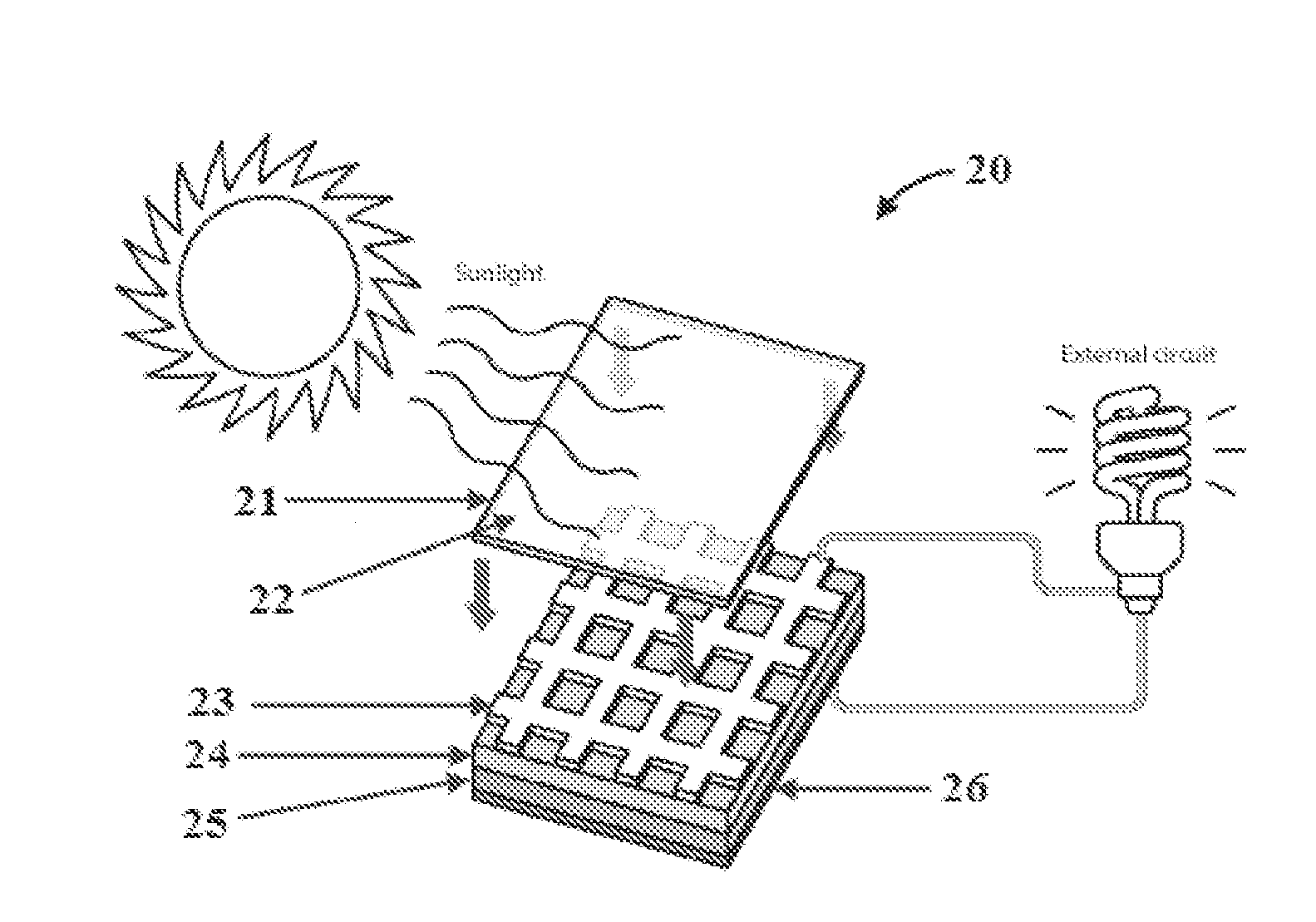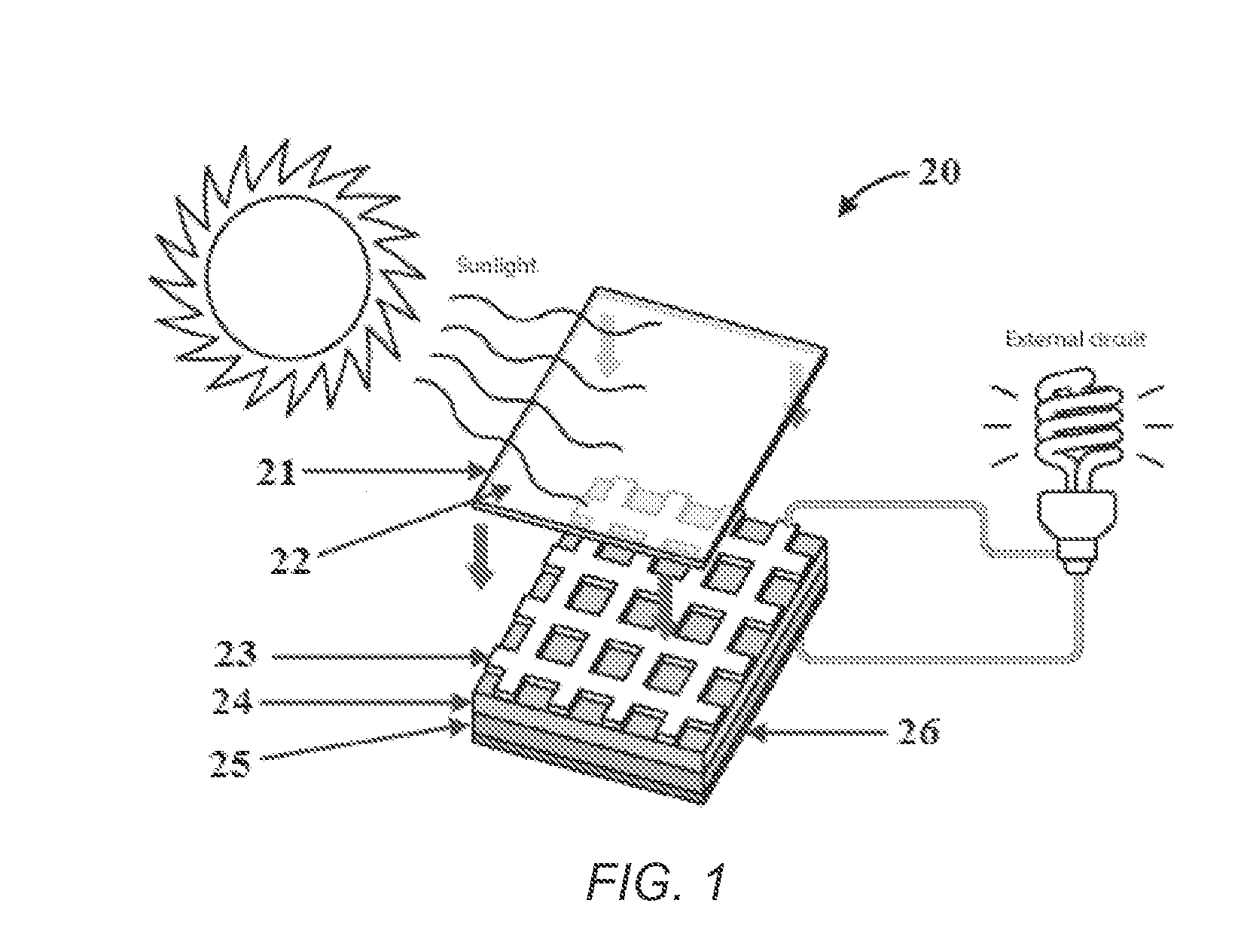Self-cleansing super-hydrophobic polymeric materials for Anti-soiling
a polymer material, self-cleaning technology, applied in the direction of coatings, photovoltaic energy generation, semiconductor devices, etc., can solve the problems of reducing the light transmission to the active layer(s), limiting the efficiency of solar panels, and glass covers are prone to soiling, etc., to achieve sufficient durability, increase the surface area of the treated surface, and maintain the effect of optical transparency
- Summary
- Abstract
- Description
- Claims
- Application Information
AI Technical Summary
Benefits of technology
Problems solved by technology
Method used
Image
Examples
example 1
Super-Hydrophobic Material
[0085]Silicone hard-coated polycarbonate (SHC-PC) substrates were prepared from a silicone hard-coat obtained from Momentive Performance Materials, Inc. (AS4010) and a polycarbonate resin obtained from SABIC Innovative Plastics (LEXAN™). In particular, these substrates were prepared by injection molding a PC panel, flow-coating and curing the primer coating and flow-coating and curing the topcoat.
[0086]1×1 cm2 samples were cleaned with isopropanol (IPA) and water, and then oven-dried at 50° C. for 15 minutes (See, FIG. 3). The polymer surfaces were then treated with plasma. The plasma treatment included etching and chemically modifying the samples using a deep reactive ion etching (DRIE) in a two-step continuous plasma process (pure oxygen for texturing and C4F8 for hydrophobization), which resulted in functional material that combine fluorinated chemistry with surface morphology. Surfaces were subjected to the O2 and C4F treatments for about 1 to 25 minute...
PUM
| Property | Measurement | Unit |
|---|---|---|
| temperatures | aaaaa | aaaaa |
| hysteresis angle | aaaaa | aaaaa |
| transparent | aaaaa | aaaaa |
Abstract
Description
Claims
Application Information
 Login to View More
Login to View More - R&D
- Intellectual Property
- Life Sciences
- Materials
- Tech Scout
- Unparalleled Data Quality
- Higher Quality Content
- 60% Fewer Hallucinations
Browse by: Latest US Patents, China's latest patents, Technical Efficacy Thesaurus, Application Domain, Technology Topic, Popular Technical Reports.
© 2025 PatSnap. All rights reserved.Legal|Privacy policy|Modern Slavery Act Transparency Statement|Sitemap|About US| Contact US: help@patsnap.com



